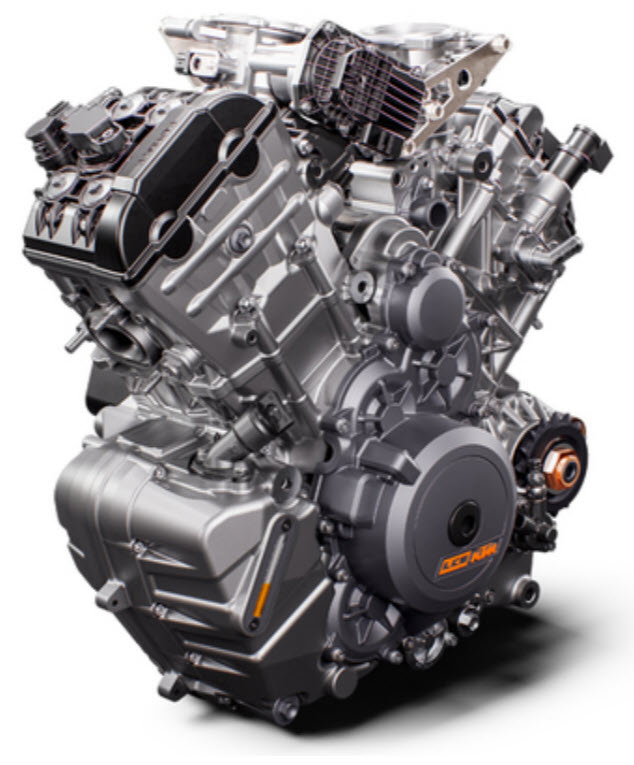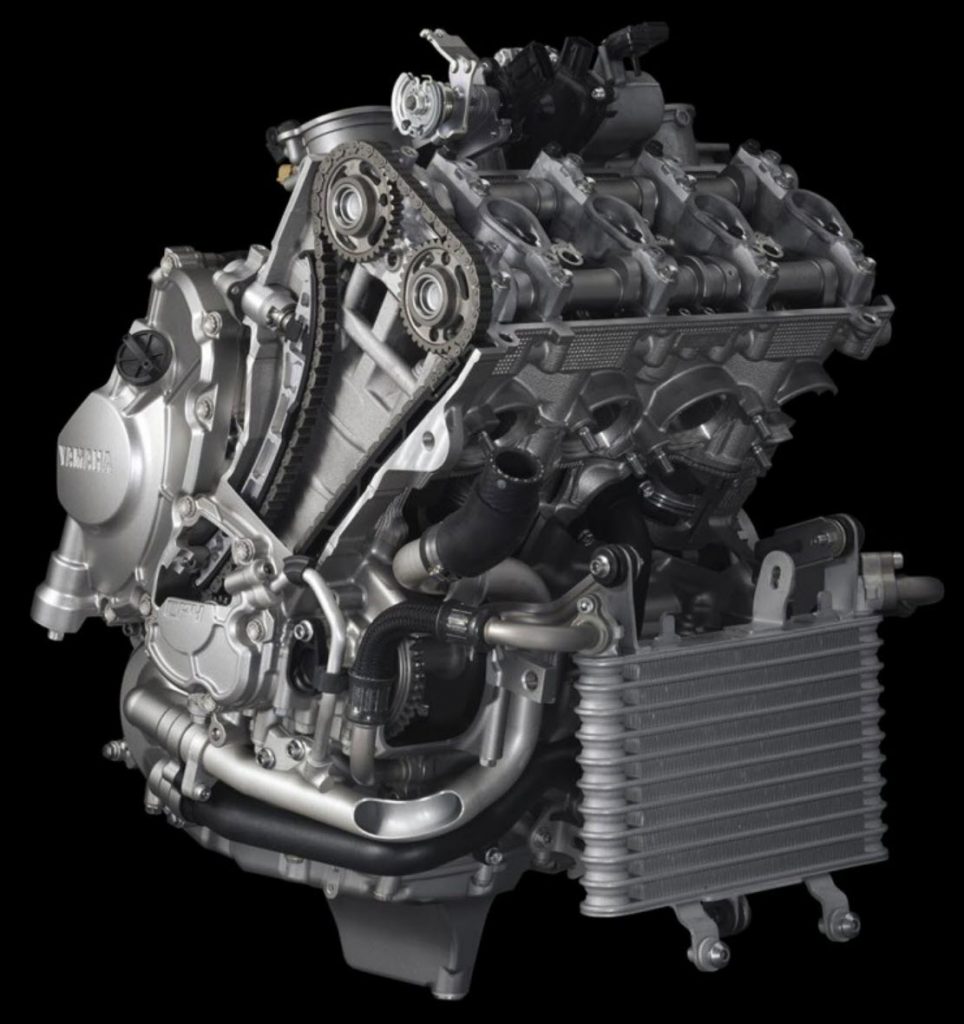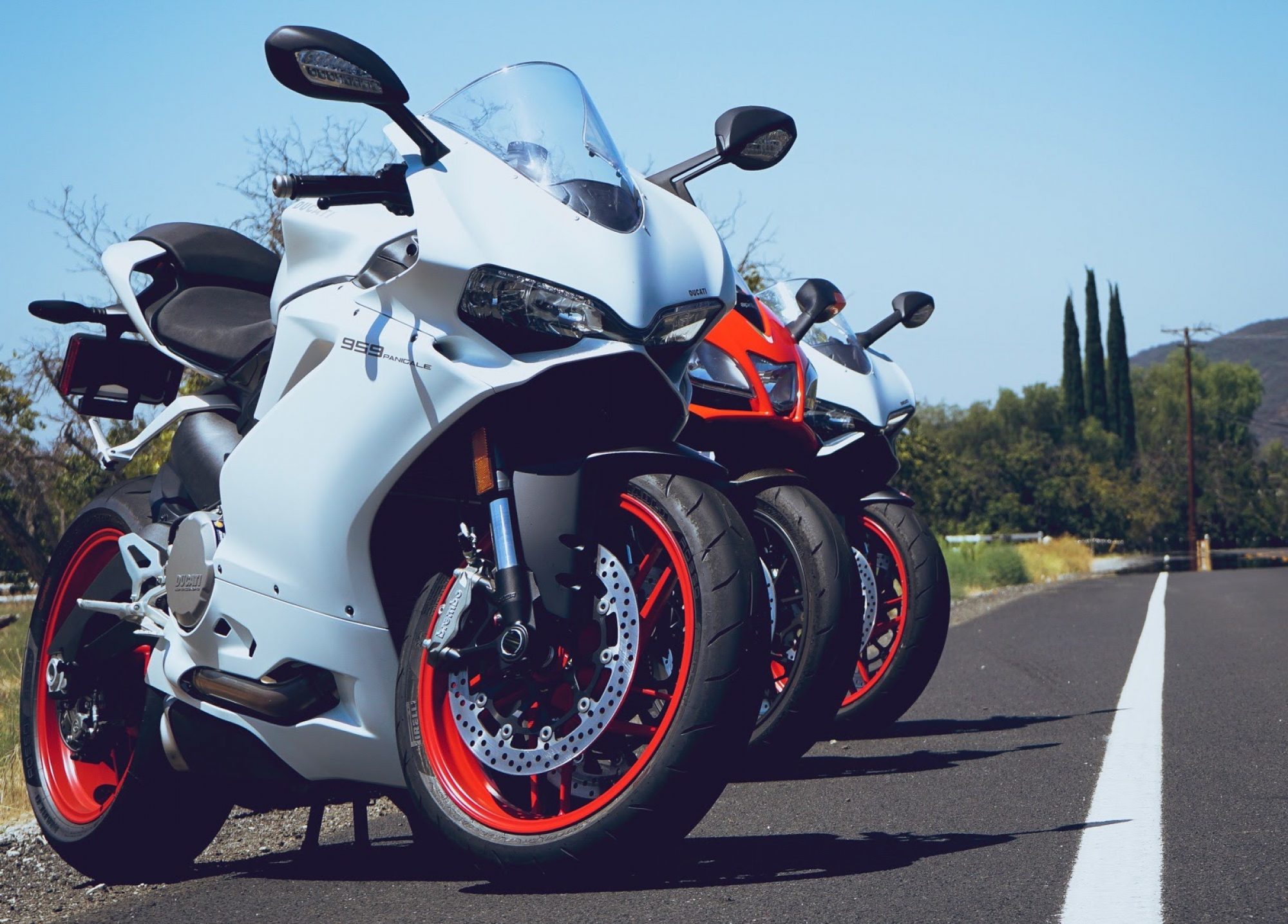
Updated 4/20/2021
Ah, the good old engine debate. Ask any motorcycle rider what kind of engine they think is best and you will get some surprisingly heated opinions. Our cruiser riding brethren will of course talk up the virtues of v-twins and their torque, while sportbike riders might be divided between inline fours, v-fours and twins. Single cylinder engines (“thumpers”) are usually reserved for dirt and off-road bikes. Engine type should not be taken lightly when choosing a first motorcycle and I’ll try to make some sense of the differences here.

V-Twin or Parallel Twin
A v-twin is a two cylinder engine with the cylinders arranged in the shape of a V; you’ve no doubt seen this engine configuration when looking at cruisers. Ducati famously uses a 90-degree twin cylinder engine that looks more like an L, though most people still refer to it as a v-twin. There are smaller sportbikes like the excellent Kawasaki Ninja 400 ABS which use a parallel twin, where the cylinders are configured side-by-side. BMW offers an opposed twin sometimes called a “flat” or “boxer” engine in some of its motorcycles, where the cylinders sit flat on their sides and 180 degrees opposite each other.

Inline 4
An inline 4 cylinder engine has all four cylinders sitting next to each other in a nice neat row. Most sport and race bikes use this configuration, though two Italian race bikes, the Ducati Panigale V4 and the Aprilia RSV4, use a V4 engine. The V4 is more complex and expensive but creates different power characteristics.

Single Cylinder
Sometimes lovingly referred to as a thumper, the typical application for a single cylinder engine is dirt and off-road bikes where light weight is king and top-end speed isn’t as important. If you watch the FIM Supercross series (dirt bikes racing in giant arenas), all of the bikes have single cylinder engines.
Which One is Best?
For a beginner motorcycle rider, one of the most important engine characteristics is torque delivery. More specifically, how much torque an engine makes at the lower RPMs will affect your ability to safely launch the bike from a stop or during sudden acceleration. New riders who haven’t yet mastered smooth clutch and throttle use will have problems handling a bike with more low end torque. They may take off too quickly and lose control, or be too timid due to the power and stall the bike. Either scenario can lead to very bad things.
Torque is a word that gets thrown around a lot when gear heads start talking about their bikes, but most riders actually have a hard time defining it. I tend to explain torque as pulling power. An engine with more torque can haul more weight with ease, whereas horsepower is more important for all-out speed. For example, let’s compare a 600cc v-twin vs. a 600cc inline 4:
- 600cc v-twin: more torque at lower RPM, less horsepower at higher RPM
- 600cc inline 4: less torque at lower RPM, more horsepower at higher RPM
Where this might come into play for newer sportbike riders is choosing between something like the Honda CBR650R or the Yamaha MT-07. (I don’t like either of these two bikes for a beginner, but they’d make a fine second bike).
- Honda CBR650R: 649cc inline 4 cylinder
- Yamaha MT-07: 689cc inline twin cylinder
The MT-07’s twin is going to have more torque at lower RPMs because its pistons are larger, and will definitely pull harder when taking off from a stop. The CBR650R’s inline 4 will feel softer at lower RPMs because its cylinders are smaller and don’t produce as much torque, but will take off like a rocket at higher RPMs where it can make more horsepower. For brand new motorcycle riders, this is my advice:
Less torque at lower RPMs is good for beginners, especially those that are new to using a clutch. It’s more forgiving because it lessens the chance of an uncontrolled launch.
Not that every beginner is doomed to fail if they start on an MT-07 which is certainly not the case; less torque is just more forgiving when pulling away from a stop.
What about the smaller starter sportbikes like the Honda CBR300R (single cylinder) and the Ninja 400 ABS (parallel twin)? Since their displacement is much smaller, 286cc and 399cc respectively, they make less torque than their bigger brothers anyway and are still manageable for beginners. Besides, no manufacturer bothers making inline 4 engines at those small displacements, so you don’t have a choice.
Personal Note
I started on a Suzuki SV650, definitely a grey area beginner bike. It had lots of low-end torque which made me nervous when taking off from stops, especially when turning right at red lights, knowing I had get up to speed quickly. I once stalled it coming out of my driveway because I was nervous about applying too much throttle while making a sharp turn onto the narrow street. The stall caused me to drop the bike, then I did a spectacular butt-over-back roll as I dropped it again while trying to pick it up. By comparison, other bikes I tried with smaller motors like the Ninja 250, Ninja 500 (both no longer made) and even inline 4 motors on 600cc sportbikes were much more manageable to me at lower RPMs. I eventually grew to love my SV650 but my development as a rider was probably slowed at the beginning due to its generous torque at low RPMs.

Good idea to provide some guidance on this, but I was dissappointed to see that you’ve not counted to 4 correctly..lol.
1 2 3 and 4.
a 3 cylinder engine has the advantage of linear increase in horsepower with revs, so double the revs, double the horsepower. To put this another way, the Torque curve is as flat and wide as they come. Its that compromise you are looking for between the flighty acceleration of the IL4s as revs rise, and the intimidating clutch control required to handle the low end torque of a twin. Strictly speaking the number of cylinders has no bearing on engine characteristics, but in so far as the bore to stroke ratio normally associated with these cylinder numbers, it does make a difference.
Another reason why the Triple cylinder engine is a good idea for young starters is that in wet weather, the triple builds its power predictably over a wide engine rev range, which is quite confidence inspiring, because you know that the engine is not going to spin the back wheel wildly if it loses grip in the wet and then the power of the IL4 in the upper rev regions makes it worse, yet the take off in the wet is not as torque laden to start the wheel spinning up in the wet as you engage the clutch.
Its often said that the triple engine has more torque than an IL4 and more HP than a twin, but in the case of the starter/learner, its actually the fact that it has less HP than an IL4 and less torque than a twin, that defines it as a very good alternative.
I started my riding experience on a triple and its very forgiving of wrong gear selection or clutch operation.
The inline triple engine is skinnier than an IL4 which might make the rider feel more at ease on the bike.
I am of course talking of the 675 triple in its many models available.
..I meant to say not as torque laden as a twin…to start the wheel spining up.
There’s no edit capability on this site.
I’m only replying to this comment 10 months late, my apologies. The reason I left out triples is because they are generally not available here in the U.S. in the form of beginner-friendly bikes. The only triples I know of are Triumph’s Daytona 675 and Street Triple, and I would not recommend either of them to a beginner.
Edit: I forgot Yamaha also has the FZ-09 with an 850cc triple, but again, it’s not a bike I would recommend to a beginner.
Triumph have realised this and come up with a street triple, which is selling really well.
Its got the lightness of a smaller bike and the predictable power delivery of a triple.
Excellent starting bike. I think the size is also smaller 675cc with upright riding style.
It only took me 7 months to reply this time haha. As I stated above, I still wouldn’t recommend the Street Triple 675 to a beginner. I think the ergonomics are good, but having 106 HP and 50 ft-lbs torque (at the crankshaft) does not make a safe starter bike in my opinion.